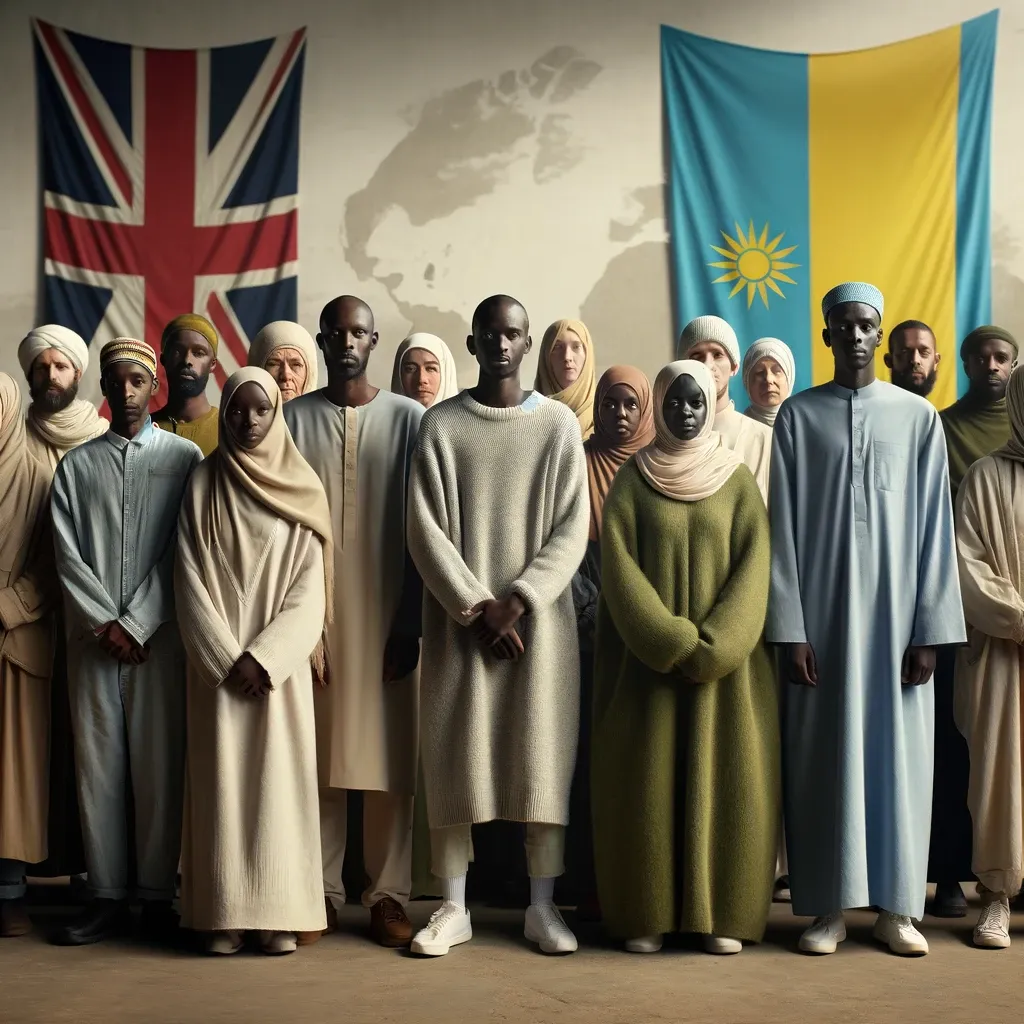The International Monetary Fund, or the IMF as most folks call it, kicked off in December 1945 with a pretty ambitious to-do list. Picture it as the world's financial advisor, with its main aim being to keep the global economy on a steady path. Based in Washington, D.C., the IMF is like a global clubhouse with 190 member countries, all working together to keep the economic ship sailing smoothly.
So, what's the IMF all about? At its heart, it's here to make sure the international monetary system (think of it as the global network of money moving around the world) doesn’t hit too many bumps. It's got a three-pronged approach to doing this, keeping an eye on the global economy, lending a hand when countries hit a financial rough patch, and offering advice and training to keep countries’ economic policies sharp.
The IMF is always watching the global economy, kind of like a financial weather station, predicting storms and offering advice to avoid them. It checks in on countries regularly to make sure their economies are healthy, giving tips on how to improve when needed.
When countries find themselves in a tight spot financially, the IMF steps in with loans to help them get back on their feet. Think of it as a banker you can count on in a pinch, but this entity also gives you a plan to avoid future troubles.
The IMF isn’t just about giving out money. it’s also big on teaching countries how to manage their finances better, from budgeting to setting up systems that make their economies more robust.
Origins
So, rewind to the mid-1940s. The world was just coming out of World War II, economies were in shambles, and there was a strong vibe that something had to change to avoid repeating the economic disasters of the past, like the Great Depression. The Solution? The Bretton Woods Conference in July 1944, in Bretton Woods, New Hampshire. It was a gathering of 44 allied nations, getting down to business to build a new international monetary framework.
Check this article on how this conference also led the way to Dollar Dominance and American Influence in everything.
Dominance of the Dollar: Journey to the Global Currency Supremacy
This is where the IMF (and its sister institution, the World Bank) comes into play. The idea was to create an institution that could oversee the international monetary system, offer a platform for cooperation on international economic issues, and provide the means to stabilize currencies and assist in rebuilding the world's economy.
Initially, the IMF's role was all about monitoring exchange rates and providing short-term financial assistance to countries to balance their books. Think of it as the world's financial watchdog and lender of last resort for keeping trade flowing smoothly.
But as the world changed, so did the IMF. The fixed exchange rate system eventually gave way to more flexible exchange rates in the 1970s, and the IMF's focus broadened. It started to tackle a wider range of financial crises and began offering policy advice and technical assistance to help countries manage their economies better.
The IMF's Journey
From its inception, the IMF was like the new kid on the block, tasked with overseeing the post-World War II economic order. Its initial role was pretty focused: managing exchange rates and providing temporary financial help to countries to stabilize their economies. But as the global stage changed, so did the IMF's script.
Expansion Beyond Exchange Rates
The plot thickened in the 1970s when the Bretton Woods system of fixed exchange rates came to an end, making way for floating rates. This shift didn't phase out the IMF. instead, it expanded its role. Now, instead of just keeping an eye on exchange rates, the IMF started to dive deeper into the overall economic policies of its member countries. This meant looking at things like inflation, fiscal policies, and how countries manage their debts.
Financial Crises and the IMF's Role
As financial crises became more common, the IMF stepped up its game. It wasn't just about offering advice anymore; the IMF became the go-to for emergency financial support for countries in a bind. Think of it as a global financial firefighter, ready to help put out economic fires around the world. Whether it was the Latin American debt crisis in the 1980s, the Asian financial crisis in the late 1990s, or the global financial meltdown in 2008, the IMF was there, hose in hand.
Policy Advice and Technical Assistance
But the IMF isn't just about handing out loans. It's also big on helping countries prevent fires in the first place. Over the years, it's ramped up its efforts to provide policy advice and technical assistance. This means helping countries set up better tax systems, improve how they spend public money, strengthen their banking systems, and get better at collecting economic data. It's all about building a stronger foundation so that economies are more resilient when shocks hit.
Special Drawing Rights (SDRs)
One of the cool tools the IMF has developed is Special Drawing Rights (SDRs). Imagine SDRs as a type of international currency that IMF members can tap into to supplement their own reserves. It's like having an extra stash of cash that countries can use to smooth over financial issues without having to deplete their own savings too much.
Adapting to a Changing World
The IMF's ability to evolve is key to its survival and relevance. Today, it's not just about managing balance of payments issues or preventing financial crises. The IMF is also tackling modern challenges like climate change, digital currencies, and how to achieve sustainable economic growth in a world that's constantly changing.
Controversies and Criticisms
One of the biggest gripes countries have with the IMF is about the conditions that come attached to its financial assistance. These conditions, often referred to as "structural adjustment programs," are meant to ensure that countries can pay back the loans and get their economies back on track. Sounds fair, right? Well, not everyone agrees.
Many of these conditions involve austerity measures like cutting public spending, increasing taxes, and privatizing state-owned enterprises. While the intention is to make economies more efficient and fiscally responsible, the side effects can be tough. Critics argue that these policies can lead to increased unemployment, reduced public services, and a slower economic recovery. It's a bit like being on a strict diet – good in theory, but not always fun in practice.
Another point of contention is the feeling that the IMF's policies are a bit cookie-cutter, not always taking into account a country's unique situation or the social impact of its recommendations. This "one size fits all" approach can sometimes exacerbate the problems it's trying to solve, leading to criticism that the IMF might be a bit out of touch with the realities on the ground.
Then there's the issue of national sovereignty. When the IMF steps in, it often requires deep changes to a country's economic policies. For many, this feels like an infringement on their ability to govern themselves, stirring up debates about the balance between necessary supervision and national autonomy.
In response to these criticisms, the IMF has made efforts to adapt its approach over the years. It has become more open to considering the social impact of its policies, incorporating measures to protect the most vulnerable in society and offering more tailored advice based on a country's specific circumstances.
IMF and its western influence and Favourism
The IMF's governance structure, where voting power is based on a quota system that reflects a country's financial contribution, naturally grants greater influence to the world's largest economies, which are predominantly Western. This setup has led to concerns over the IMF's policies and interventions being skewed in favor of Western economic models and interests.
Some of the examples include
- The Greek Debt Crisis: One of the more prominent examples of the IMF's involvement that sparked controversy was the Greek debt crisis. Critics argue that the austerity measures imposed on Greece, as part of the bailout agreements, reflected a preference for Western, particularly European, financial interests over the well-being of the Greek economy and its citizens. The severe spending cuts and tax increases led to a deep recession, soaring unemployment, and a public outcry over the social impact of these measures.
- Structural Adjustment in Africa: The IMF's structural adjustment programs in African countries during the 1980s and 1990s have been criticized for prioritizing Western neoliberal economic policies, such as privatization and deregulation, often at the expense of social welfare and economic sovereignty. Critics argue that these policies have not always led to the promised growth and stability, and in some cases, have exacerbated poverty and inequality.
- Response to the Asian Financial Crisis: The IMF's response to the Asian Financial Crisis in the late 1990s is another point of contention. The fund's prescription of high interest rates and austerity for affected countries like Thailand, Indonesia, and South Korea was criticized for being influenced by Western economic thinking, which some argue worsened the economic downturn and social hardship in those countries.
The United States and IMF
As we discussed, The IMF's governance structure is built around a quota system, which determines a country's financial contribution, voting power, and access to financing. The United States, holding the largest quota, enjoys a unique position that allows it to exert considerable influence over IMF policies and lending decisions. This dominant role reflects the U.S.'s economic stature on the global stage and its foundational role in establishing the IMF back in 1944.
The U.S. views the IMF as a key instrument for promoting global financial stability—a priority that aligns with its own economic and strategic interests. By supporting IMF interventions in countries facing financial crises, the U.S. indirectly contributes to global economic stability, which benefits the international economy, including American businesses and investors. For instance, the U.S. has been a major proponent of IMF programs that aim to stabilize economies in regions critical to U.S. strategic interests, such as Latin America, Middle east and Eastern Europe.
However, the significant influence of the U.S. over the IMF has not been without controversy. Critics argue that this influence can lead to the prioritization of U.S. economic and political interests in the IMF's operations and lending practices. For example, the terms and conditions attached to IMF loans, as well as the decision to extend or withhold financial assistance, are sometimes viewed as being aligned with U.S. foreign policy goals.
Summary
Here's a concise summary of the main points we've discussed regarding the International Monetary Fund (IMF):
- IMF's Founding and Purpose: Established in December 1945 to stabilize the global economy, act as a financial advisor, and ensure smooth international monetary transactions among 190 member countries.
- Core Functions: Monitors global economic health, provides financial aid during crises, and offers policy advice and training to bolster economic management.
- Origins at Bretton Woods: Formed post-World War II to prevent economic disasters like the Great Depression, leading to the establishment of fixed exchange rates and a framework for international monetary cooperation.
- Evolution of Roles: Transitioned from focusing on exchange rates to broader economic policy oversight and crisis intervention as the global financial landscape changed.
- Expansion Beyond Exchange Rates: Adapted to the end of the Bretton Woods system by diving into countries' broader economic policies and offering tailored assistance.
- Financial Crises Response: Acted as a global financial firefighter during crises, providing emergency support and advocating for policy reforms to enhance economic resilience.
- Technical Assistance and Policy Advice: Boosted support for structural economic reforms, including better fiscal management and financial system strengthening.
- Special Drawing Rights (SDRs): Introduced SDRs as an international reserve asset to supplement members' official reserves and aid in financial stability.
- Adapting to Modern Challenges: Continues to evolve by addressing contemporary issues like climate change, digital currencies, and sustainable economic growth.
- Controversies and Criticisms: Faced criticism for austerity measures, a one-size-fits-all approach to policy advice, and infringing on national sovereignty, leading to efforts to tailor advice more sensitively to countries' needs.
- Western Influence and Favoritism: Concerns over the IMF's policies being influenced by Western economic models and interests, with specific examples like the Greek Debt Crisis and structural adjustments in Africa highlighting perceived biases.
- United States and IMF Relationship: The U.S., as the largest shareholder, exerts significant influence, shaping IMF policies and interventions, sometimes aligning with U.S. strategic interests but also drawing criticism for potential biases towards U.S. policy goals.






